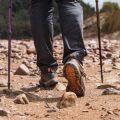1. Understanding the Leave No Trace Ethic
When you head out into America’s wild places, you’re stepping into a tradition of respect and care for nature that runs deep in outdoor culture. The Leave No Trace (LNT) ethic is all about protecting the lands we love so that future generations can enjoy them too. But what exactly does this mean, and where did it come from?
The Origins of Leave No Trace
The concept of Leave No Trace began to take shape in the 1960s and 70s, as more people started exploring public lands across the United States. With increased foot traffic came visible impacts—trampled plants, litter, damaged campsites. In response, land management agencies like the U.S. Forest Service and National Park Service developed educational programs to teach visitors how to minimize their impact. These ideas were eventually organized into what we know today as the Seven Principles of Leave No Trace.
Core Values of Leave No Trace
At its heart, Leave No Trace is built on a few simple but powerful beliefs:
| Core Value | What It Means |
|---|---|
| Respect for Nature | Treating all plants, animals, and landscapes with care |
| Personal Responsibility | Making thoughtful choices about your actions outdoors |
| Community Stewardship | Looking out for the environment and each other |
| Education & Awareness | Learning and sharing best practices for outdoor ethics |
Why Leave No Trace Matters in American Outdoor Culture
For many Americans, spending time outside—whether hiking in national parks or camping in local forests—is a cherished part of life. The Leave No Trace ethic isn’t just about rules; it’s about stewardship, which means taking care of something valuable together. By following LNT principles, outdoor enthusiasts show respect not only for nature but also for fellow adventurers and future generations.
The Big Picture: Protecting Our Shared Lands
Public lands are one of America’s greatest treasures, open to everyone. Practicing Leave No Trace ensures these places stay wild and beautiful. When you pack out your trash or stay on designated trails, you’re helping preserve the outdoor experience for others. It’s a small effort with a big impact—and it all starts with understanding why it matters.
2. Plan Ahead and Prepare
Why Planning Matters for Leave No Trace
One of the most important Leave No Trace (LNT) principles is planning ahead and preparing for your adventure. Whether you’re heading to a national park, a local state forest, or a popular trail, thoughtful research and preparation help you stay safe, respect wildlife, and minimize your impact on America’s incredible public lands.
Essential Tips for Trip Planning
Proper trip planning makes all the difference in having a smooth, enjoyable, and low-impact outdoor experience. Here are key tips to keep in mind:
- Research the area: Check official websites, maps, recent trail reports, and weather forecasts. Know if permits are required and what regulations or restrictions may be in place.
- Pack appropriately: Bring layers for unpredictable weather, enough food and water, first aid supplies, and gear that matches the season and terrain. Don’t forget navigation tools like a map, compass, or GPS.
- Know your group: Consider everyone’s skill level and physical ability. Choose trails and campsites that suit all participants.
- Have a backup plan: Be flexible! If trailheads are crowded or conditions change, have alternative routes or destinations in mind.
- Leave an itinerary: Tell someone at home where you’re going and when you expect to return.
Quick Reference: Trip Planning Checklist
| Planning Step | What to Do | Why It Matters |
|---|---|---|
| Check Regulations | Visit official park or land management sites for rules & closures | Avoid fines & protect sensitive areas |
| Weather Forecasts | Review current & future weather conditions | Packs proper clothing & avoid hazards |
| Packing List | Create a checklist based on length/difficulty of trip | Ensures you have essentials without overpacking |
| Group Assessment | Discuss experience levels & expectations with your group | Keeps everyone safe & happy on the trail |
| Alternate Plans | Select backup routes or campsites before leaving home | Avoids overcrowding & trail damage if Plan A is full/closed |
| Leave Itinerary Behind | Tell a friend/family member your plans & check-in time | Cuts down on search-and-rescue risks if something goes wrong |
The American Context: Public Lands & Local Rules
The U.S. is home to millions of acres of public land—national parks, forests, BLM lands, and wilderness areas. Each may have different rules about campfires, group sizes, pet policies, or even bathroom etiquette. Always double-check before you go so you can help preserve these wild places for everyone who loves them!

3. Travel and Camp on Durable Surfaces
Understanding Durable Surfaces
When exploring the great outdoors in the United States, its important to stick to durable surfaces. Durable surfaces are areas that can handle foot traffic and camping without suffering long-term damage. Common examples include established trails, campsites, rock, gravel, sand, dry grasses, and snow.
Why This Matters
Choosing durable surfaces helps protect fragile plants, prevents soil erosion, and minimizes your impact on wildlife habitats. Following this principle ensures that natural spaces remain beautiful and healthy for everyone to enjoy—now and in the future.
Guidelines for Selecting Trails
- Stay on Marked Trails: Always use official, marked trails whenever possible. Going off-trail can damage vegetation and disturb animal homes.
- Avoid Trail Widening: Walk single file in the middle of the trail, even if it’s muddy or wet. Stepping around puddles causes the trail to widen and harms nearby plants.
- Respect Trail Closures: If a trail is closed for restoration or safety, choose another route. These closures help nature recover.
Choosing Campsites in U.S. Environments
Selecting the right campsite is crucial for minimizing your impact. Here’s a simple table to help you make good choices in different environments:
| Environment | Best Campsite Choice | Avoid |
|---|---|---|
| Forests (National Parks/Forests) | Established campsites or bare soil away from water sources | Fragile meadows, close to streams/lakes (at least 200 feet away) |
| Deserts | Sandy washes or gravel bars with no living plants | Cryptobiotic soil crusts (look like dark, bumpy soil) |
| Mountains & Alpine Zones | Rocky sites or spots with deep snow cover | Tundra vegetation and wildflower fields |
| Parks with Designated Sites | Official campsites marked by park services | Unmarked areas or places with visible plant life |
Campsite Setup Tips
- Camp at least 200 feet (about 70 adult steps) from lakes and streams to protect water quality and wildlife habitat.
- If no established site is available, look for spots where vegetation is already absent or minimal.
- Avoid enlarging existing campsites—keep tents and gear within worn areas.
- If you’re camping in a large group, consider splitting up into smaller groups to reduce overall impact.
Minimizing Impact on Soil, Plants, and Wildlife
- Sensitive Soils: In muddy or soft ground conditions, try to move quickly through these areas to avoid leaving deep footprints.
- Plants: Never pick plants or remove rocks. Leave everything as you found it so others can enjoy it too.
- Wildlife: Choose campsites away from animal trails or watering holes. Keep food stored securely to prevent attracting animals.
- No Trace Left Behind: After breaking camp, check your site for trash or misplaced gear. The goal is to leave no evidence of your stay!
4. Proper Waste Disposal and Wildlife Respect
Instructions for Handling Trash
Keeping nature clean is a big part of the Leave No Trace principles. The golden rule is simple: Pack it in, pack it out. This means everything you bring with you—snack wrappers, water bottles, leftover food, and even tiny items like twist ties or fruit peels—must go home with you. Don’t leave anything behind, even if it seems harmless or biodegradable.
Trash Disposal Table
| Item | Proper Disposal Method |
|---|---|
| Plastic wrappers | Take home and dispose in a trash can |
| Leftover food | Pack out in a sealed bag to avoid attracting animals |
| Bottles & cans | Recycle at home or in park-provided recycling bins |
| Cigarette butts | Pocket them and throw away at home |
| Toilet paper (used) | Pack out in a sealed bag or use provided facilities if available |
Human Waste Management Tips
If there’s no restroom nearby, it’s important to handle human waste responsibly:
- Use established toilets or outhouses whenever possible.
- If nature calls on the trail:
- Dig a “cat hole” 6-8 inches deep and at least 200 feet (about 70 adult steps) away from water sources, campsites, and trails.
- Bury your waste and cover the hole with soil.
- Pack out used toilet paper in a sealed plastic bag unless specific park rules allow burial of TP.
- In some high-use areas, you may be required to pack out all human waste using WAG bags or similar products.
Cat Hole Quick Guide
| Step | Description |
|---|---|
| Location | At least 200 feet from water, camp, and trails |
| Depth/Size | 6-8 inches deep, 4-6 inches wide |
| Bury Waste? | Bury all waste and cover with natural materials |
Respecting Wildlife: Interactions & Bear Safety Practices
America’s parks are full of amazing wildlife. To keep animals safe—and yourself out of trouble—follow these key rules:
- No feeding: Human food harms animals and makes them dependent on people.
- Keep your distance: Use binoculars or cameras to view wildlife. Never approach or try to touch animals.
- Bears & Food Storage:
- If you’re in bear country (like Yellowstone or Yosemite), always store food in bear-proof containers or lockers provided by the park.
- If backpacking, hang your food at least 10 feet off the ground and 4 feet away from tree trunks, or use an approved bear canister.
- Avoid leaving scented items (toothpaste, deodorant) unattended; bears have great noses!
- If you see a bear, stay calm, back away slowly—never run or scream. Give the animal plenty of space to leave.
- Pets: Keep pets leashed and never let them chase wildlife.
Bears & Food Storage Table
| Situation | Recommended Action |
|---|---|
| Tent camping in bear country | Use bear lockers for all food and scented items; never store food in your tent. |
| No lockers available (backpacking) | Hang food at least 10 ft up and 4 ft from trunk, or use a bear canister. |
| Packing snacks on the trail | Keep snacks sealed; do not drop crumbs or wrappers along the way. |
| Sighting a bear nearby camp/trailhead | Stay calm; slowly back away; make yourself look large; report sighting to rangers if necessary. |
The best way to enjoy America’s wild places is by keeping them wild. By taking care of your trash, managing human waste properly, and showing respect for wildlife, you help ensure that these special lands remain beautiful for everyone who visits after you.
5. Minimize Campfire Impacts and Foster Outdoor Respect
Advice for Responsible Campfire Use
Campfires are a classic part of the American outdoor experience, but they can also cause lasting damage to wild places if not handled responsibly. Before you strike a match, consider these important guidelines:
- Check Local Regulations: Always find out if campfires are allowed where you plan to camp. Many parks and forests have fire bans during dry seasons.
- Use Established Fire Rings: If you must have a fire, use existing fire rings or designated fire areas to avoid scarring new ground.
- Keep Fires Small: Only build fires big enough for your needs—usually just for warmth or cooking.
- Burn Only Local Wood: Use sticks from the ground that can be broken by hand. Don’t bring wood from home; it can carry pests that harm local ecosystems.
- Never Leave Fires Unattended: Stay with your fire at all times and put it out completely before you leave by dousing with water and stirring until cold.
Alternatives to Campfires
If conditions aren’t safe for a fire or you want to reduce your impact, try these alternatives:
| Alternative | Description | Benefits |
|---|---|---|
| Portable Camp Stoves | Lightweight, easy-to-use stoves for cooking meals. | No fire scars, safe in most conditions, quick cleanup. |
| LED Lanterns & Headlamps | Battery-powered lights for gathering after dark. | No smoke, no heat risk, reusable. |
| Packing Extra Layers | Dress in warm clothing instead of relying on a fire for heat. | No fuel needed, safer for the environment. |
Practical Ways to Respect Fellow Hikers and Preserve America’s Wild Places
Respecting nature goes hand-in-hand with respecting other people on the trail. Here are some practical tips:
- Keep Noise Down: Enjoy music or conversations quietly so everyone can appreciate the sounds of nature.
- Share Campsites Considerately: Give others space and never take more room than you need.
- Packing Out Trash: Bring all garbage back with you, including food scraps and burned material from fires.
- Avoid Overcrowding Trails: Hike in smaller groups and let faster hikers pass on narrow trails.
- Respect Wildlife: Observe animals from a distance and never feed them—it changes their natural behavior.
The American Outdoors Ethic
The heart of Leave No Trace is stewardship—caring for America’s wild lands so future generations can enjoy them too. Whether you’re camping in Yellowstone or hiking local trails, every action matters. By minimizing campfire impacts and showing respect to both people and the environment, we protect the adventure for everyone who follows in our footsteps.


